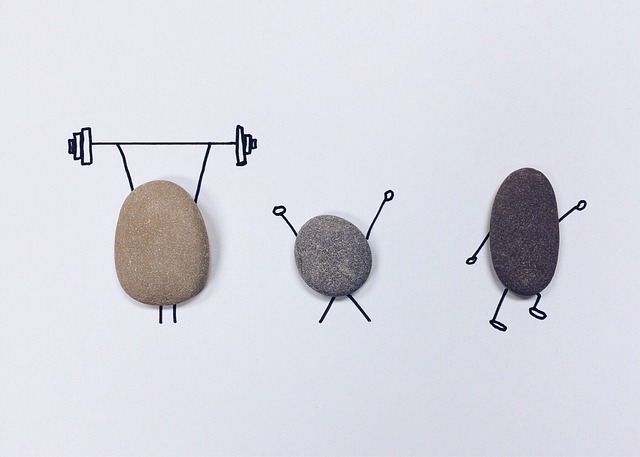Before attempting any changes, assess your current work-life balance using mindfulness coaching techniques. Evaluate your daily routine and identify areas where work overshadows personal time, hobbies, or relaxation. This self-evaluation helps pinpoint root causes of imbalances like long hours or lack of boundaries. By setting realistic goals and implementing sustainable adjustments, you can achieve a healthier work-life balance through clear routines, self-care prioritization, and mindful stress management.
Struggling to find balance between work and life? This guide offers actionable steps to reclaim your time and energy. First, assess your current work-life dynamics by identifying imbalances and tracking your daily routines. Then, integrate mindfulness practices like breathing exercises, mindful eating, and meditation into your day for mental clarity and stress reduction. Set clear boundaries, prioritize self-care through dedicated exercise and relaxation time, and learn to say no to non-essentials. Leverage technology with productivity apps and automation to streamline tasks and delegate responsibilities. Discover the power of mindfulness coaching to transform your work-life balance today.
- Assess Your Current Work-Life Balance
- – Identify areas where your work and personal life are out of sync
- – Track time spent on work-related tasks vs. personal activities
- Integrate Mindfulness Practices into Daily Routine
Assess Your Current Work-Life Balance

Before implementing any changes, it’s crucial to understand where you currently stand in terms of work-life balance. Start by assessing your daily routine and habits. How much time do you spend on work-related tasks? Are there specific areas in your life—such as personal hobbies, family time, or relaxation—that are being overshadowed by work? Mindfulness coaching can help you become more aware of these patterns. Through introspection and reflection, you can identify the root causes of any imbalances, whether it’s long working hours, a lack of boundaries, or an overwhelming workload.
This self-evaluation is a vital first step towards positive change. By acknowledging and accepting your current situation, you can begin to make conscious decisions about how to redistribute your time and energy more equitably between work and other aspects of your life. This awareness will guide you in setting realistic goals and making sustainable adjustments for an improved work-life balance.
– Identify areas where your work and personal life are out of sync

Out of sync between work and personal life can manifest in various ways, from excessive work hours encroaching on family time to a lack of boundaries between professional duties and personal relaxation. Mindfulness coaching can help identify these discrepancies by encouraging individuals to reflect on their daily routines and priorities. Through mindfulness practices, one becomes more attuned to the present moment, allowing them to recognize when they’re mentally drifting into work-related thoughts during what should be personal time.
This awareness is crucial in pinpointing specific areas where adjustments are needed. For example, someone might realize they’re checking work emails well into the evening or on weekends, or that their evenings and weekends are consumed by work-related stress rather than leisure activities. Once these out-of-sync moments are identified, it becomes easier to set boundaries, establish clear routines, and prioritize self-care—all essential steps in achieving a healthier work-life balance.
– Track time spent on work-related tasks vs. personal activities

Many professionals struggle with distinguishing between work and personal time, often leading to burnout. A crucial first step towards achieving a healthier balance is to start tracking how you spend your days. Utilizing tools or apps designed for this purpose can provide valuable insights into your routines. By logging your work-related tasks and personal activities, you gain awareness of areas where adjustments are needed.
Mindfulness coaching advocates for conscious decision-making, and time tracking encourages just that. It helps individuals identify when they’re devoting too much energy to work at the expense of their well-being and leisure. With this data, making informed changes becomes possible, allowing you to set boundaries and allocate time more effectively for both professional and personal growth.
Integrate Mindfulness Practices into Daily Routine

Integrating mindfulness practices into your daily routine is a powerful way to cultivate better work-life balance. Mindfulness coaching can guide you in focusing on the present moment, reducing stress and improving concentration. By dedicating just a few minutes each day to mindful breathing exercises, meditation, or short body scans, you can enhance your ability to manage overwhelming workloads and deadlines, ensuring that you remain productive while also prioritizing self-care.
Mindfulness isn’t about silencing the mind but rather observing thoughts and sensations without judgment. This practice allows for a clearer perspective on work-related pressures, helping you set healthy boundaries. With regular mindfulness coaching, you’ll learn to recognize when you’re feeling burnt out or overwhelmed, enabling you to take proactive steps to rebalance your day.
By assessing your current work-life balance and integrating mindfulness practices like those offered by mindfulness coaching, you can gain a deeper understanding of your routines and make targeted adjustments. Through mindful time management and prioritization, you can cultivate a more harmonious relationship with both your professional and personal responsibilities, ultimately leading to improved overall well-being.
